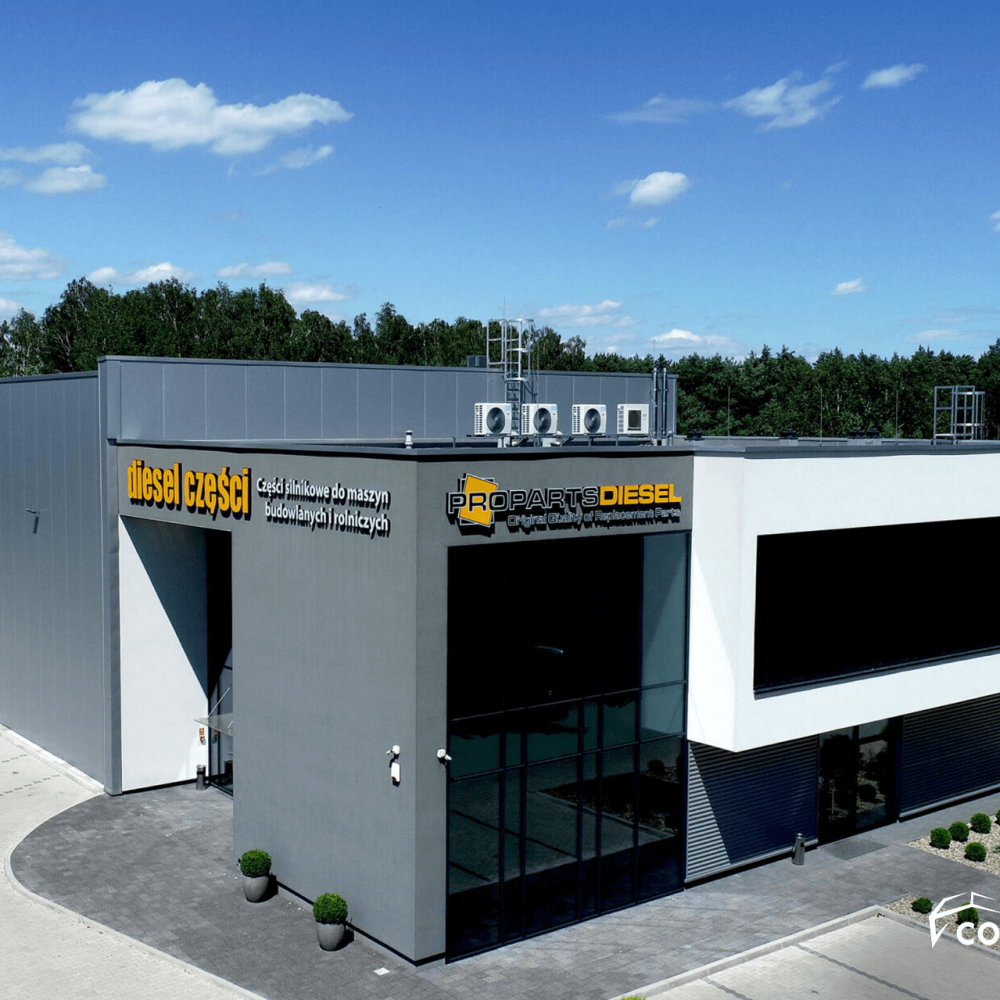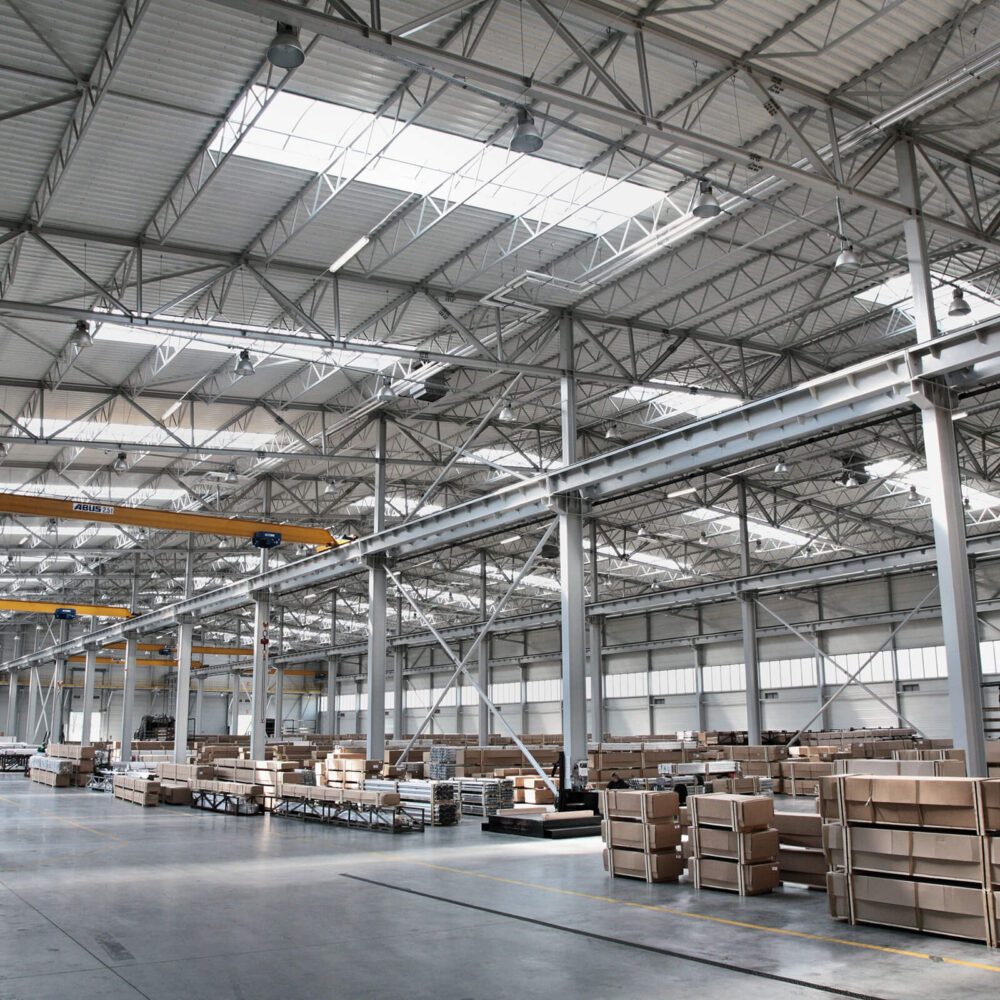
What are bracings in steel halls and what is their purpose?
Bracing in steel halls is a very important design element. These are typically lightweight components that perform a number of important tasks. The primary role of steel bracing is to ensure the stability of the hall as a whole. This is because typical steel halls are designed as connected to the foundations in an articulated manner. This means that there is a structural stiffness deficiency in the direction perpendicular to the plane of the main frame. It is the bracing system that is responsible for supporting the hall structure in the longitudinal direction. It should be emphasised here that the bracing system is not only the most common, “X” type bracing that is found on the roof. It is a combination of more than a dozen elements that together perform the stiffening role. Read the next paragraph for details on individual types of bracing. Back to the role of bracing, note that its is responsible for taking the forces of wind blowing on the gable wall and then bringing them down to the foundation. This is a particularly important role where industrial halls are of considerable height. Then the wind pushing on the gable wall is significant. Steel hall bracing, when properly located and designed, can significantly reduce the weight of the entire hall structure. This is because they improve the “working” conditions of the hall’s columns, rafters and roof purlins. An experienced designer can minimise the weight of an industrial building through the appropriate use of a bracing system. Roof bracing for steel halls can reduce structural imperfections in the roof rafter. With significant impacts transmitted to the roof rafter, it tends to lose its alignment. In this situation, the roof bracing supports the girder eliminating this effect. In addition, a correctly designed bracing system strongly reduces the tilt of the main columns of the steel hall. So what are the principles for designing industrial hall bracing? It is a good practice to locate the transverse slope brace (i.e. the roof bracing) in the penultimate fields of the hall.
There are several reasons for this arrangement:
- In the case of hall extensions, it does not interfere with the bracing system, which is not connected to the last frame
- The gable wall, additionally supported by columns, has a smaller rafter than the internal frames.
So what profiles are used for the bracing bars? In a typical industrial hall with no overhead cranes, round bars, solid D16-D25, are used. These are flaccid bars that can only transmit tensile forces. Where transport in the hall is done by cranes, the bracing should be made of round, square or rectangular tubes. This is because an overhead crane, while moving, generates both tensile and compressive forces which change multiple times. Round bars would quickly elongate and require frequent tensioning.
Bracing in the pre-extreme areas facilitates the prefabrication of these elements due to the consistency of the internal rafter profiles.
Of course, two bracing fields will not do the job in every case. Industrial facilities with lengths in excess of 70-80 m will require an additional internal bracing field.
The most common bracing found in steel halls
In a typical steel hall, several types of bracing can be distinguished. Each plays an important role in conveying the impact of an industrial facility:
- the transverse slope braces are ‘X’ shaped bars that are located on the roof of the hall. It stabilises the hall in longitudinal direction.
- the vertical wall brace is also a circular bar positioned in the hall walls in the same fields as the transverse slope braces. Like the above braces, it stabilises the hall relative to its longer dimension.
- the vertical roof (ridge) brace is the element that laterally stabilises the truss support system of the structure. It is placed near the ridge along the entire hall. Used in long-span halls where the roof structure consists of truss girders.
- the eaves braces are bars in an ‘X’ pattern that are located along the eaves of the hall. It is an element used particularly for tall halls that carry significant loads from wind blowing on the long side of the structure.
- gable wall braces are ‘X’ bars located between the gable wall columns. They are responsible for the rigidity of the entire gable wall
- the torsion bar of the roof transom is the so-called “stay” that supports the bottom flange of the transom
It should be noted that the roof purlins, although not referred to as bracing, also play an important role in stiffening the hall structure. Together, all of these types of bracing form the bracing system of the steel hall. The role of the designer is to position, define the shape, dimensions and, of course, the cross-sections of the bars used for bracing appropriately.



